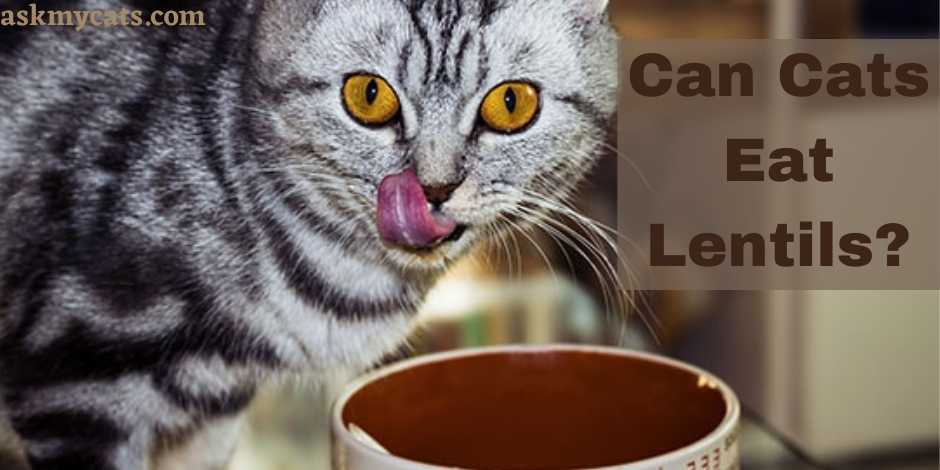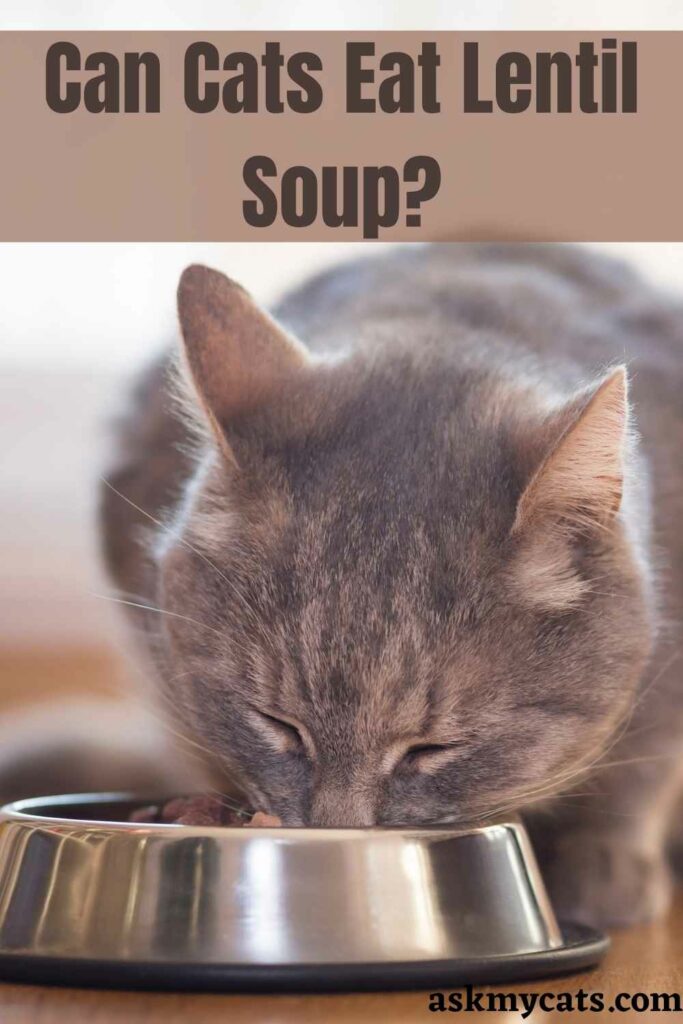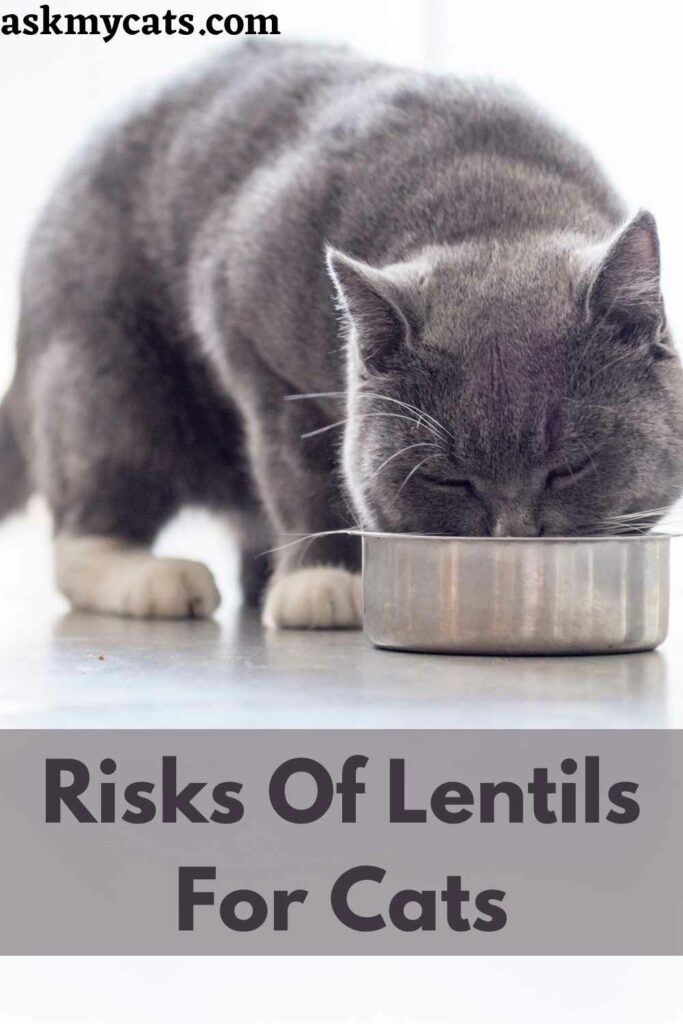Lentils are a type of grain that comes from the legume family of plants. Lens culinaris is the scientific name for the plant. Lentils may appear to be ordinary beans at first glance.
However, both the physical appearance and dietary profiles of the two grains are significantly different. Cats will consume anything that resembles food. Lentils are included in this category. So don’t be surprised if you find your kitty companion eating the last of the lentils you left on the table.
However, as a caring cat parent, you should constantly be cautious of anything that enters your cat’s stomach. This is especially true if the food is not an animal product. So, can cats eat lentils?
Yes, cats can eat lentils, to put it simply. They probably shouldn’t, though. While your cat may not die after eating a few servings of lentils, eating too many lentils might cause gastrointestinal problems such as vomiting and diarrhea. Lentils also don’t meet a lot of the nutritional needs of cats.
This article talks about if you should feed your cats lentils and their potential benefits.


Give Your Cat the Perfect Day
Get the Free Ebook!
Are Cats Allowed Lentils?
Yes, cats are allowed to eat lentils but only in moderation.

Cats are obligate carnivores, meaning they only need meat to survive.
While lentils do include protein and other minerals, cats struggle to get enough nourishment from non-meat sources.
Cats, for example, do not require fiber in their diet. Fiber-rich diets, in fact, can have a laxative impact on cats.
If the lentils are cooked, you can give them to your cat in moderation.
Lentils do have certain beneficial elements, particularly protein.
Uncooked lentils are more likely to be played with by cats than eaten.
Cooked lentils, on the other hand, can be a pleasant and exciting treat for cats.
When it comes to cats and lentils, some of them enjoy eating the vegetable. Many of them are completely enthralled by the material.
Cats are classified as obligate carnivores, meaning they must eat meat to thrive. Vegetables, on the other hand, include a variety of nutrients that can be good to them.
Lentils are not poisonous or dangerous to cats, which is odd given that we all know that cats could survive on either meat or cat food. It’s uncommon but not unprecedented among cat enthusiasts.
In fact, many cat owners try to incorporate greens into their cat’s diet to provide a variety of protein and vitamin sources, and lentils are one among them.
It’s impossible to predict what a certain cat will eat or refuse to eat. Some individuals would rather eat only meat and cat food, while others will consume lentils and other greens.
Forcing your cat to eat a vegan diet is never a good idea. The digestive system of a cat differs from ours in several ways.
Cats still require protein to survive. Lentils are just a good way for them to receive carbs as well as some other nutrients in their diet.
On the other hand, if you think your cat can live solely on lentils and veggies, you should first contact a veterinarian.
Can Kittens Eat Lentils?
No, kittens should not eat lentils as their stomachs are still developing and are nowhere as robust as an older cat.
Kittens are more vulnerable to things than adult cats are. If they eat too many lentils, they are more likely to have indigestion and diarrhea.
The issue with feeding lentils to your kitten is that lentils are nutritionally insufficient for kittens. Carbohydrate overabundance is a concern.
Only about 2% of a kitten’s diet in the wild, or a balanced indoor diet for that matter, should be carbs. The fiber content of lentils is the same.
Kittens require extremely little fiber in their diets; consuming lentils will undoubtedly exceed this limit, potentially causing issues.
Raw lentils could also be a choking threat for kittens because they are not familiar with other foods. It’s better to keep uncooked lentils away from your kitten.
Can Cats Eat Lentil Soup?
You should avoid feeding your cat lentil soup as it provides no nutritional value to them.

A proverb goes like this: Don’t judge a book by its cover, but in this case, you can because this is cat food, and if they can’t eat their main and primary food, why should they be able to eat lentil soap?
Some cats enjoy trying new things in their lives since it is sometimes beneficial for them to do so if the new items have a positive impact on the cats, but in this case, the lentil soup is not a better option for the cat.
If the cats ate a small amount of the soap or just licked it, keep in mind that these small things are no longer an adventure for the cats, and this will not cause any problems in your cat.
Some kittens may enjoy trying these things early on, but they will soon stop doing so because their stomachs are still developing at the age of a kitten, but their stomachs are fully designed at adulthood and also tell them things that are not good for them.
Both raw and cooked lentils, as well as lentil soap, do not appear to meet the nutritional needs of cats, and they appear to pose a risk to your cat if you begin feeding them these items on a regular basis.
Can Cats Eat Lentil Sprouts?
Yes, cats can eat lentil sprouts but only in moderation.
Although cats are carnivores, they require some greens for roughage and vitamins. Most grasses are safe for cats to eat.
Some cats even enjoy sprouted lentils or beans. Sprouts and grass are both simple to grow and ready to consume in about a week.
Dr. Lori Teller, a clinical associate professor at Texas A&M University’s College of Veterinary Medicine and Biomedical Sciences, explains the basics of cat sprouts for all cat owners.
“Cat sprouts isn’t essential in a cat’s diet if their food is well-balanced, but it is something that many cats enjoy,” Teller added.
“While having cat grass freely available would not be unsafe, if a cat appears to consume it voraciously, it may be worth visiting with a veterinarian to establish if the cat’s diet is providing all of its nutritional needs.”
“The bigger concern would be if a cat or other animal mistook lentil sprouts for other potentially hazardous plants in the house. It’s critical to keep such plants away from any pets.”
Benefits Of Lentils For Cats
Like most vegetables, there are many benefits of feeding your cat some lentils every once in a while. Some of them are: –
- They have a high protein concentration. Lentils, in fact, have the highest protein content of any vegetable food known to man. So, if you want to give your cat a lot of protein but don’t want to offer them meat, lentils are a terrific alternative.
- Lentils contain B vitamins as well. So, if you want your cat to get more of these vitamins, feed it lentils, and you’ll have an excellent source of B vitamins right there. Lentils, in particular, are high in Vitamin B3 and folate.
- Lentils are also high in iron, which is beneficial for cats. Iron is naturally found in meat products, but lentils are an excellent source of the vitamin.
- Lentils are abundant in dietary fiber as well as proteins. Although cats can live without fiber, for the most part, fiber-rich meals may provide them with a number of advantages. Fiber, particularly insoluble fiber, helps digestion by adding weight to a cat’s feces, allowing him to empty his intestines more frequently. As a result, adding lentils to your cat’s diet may help to alleviate digestive difficulties, including constipation.
- Fiber and protein also work together to give you a more prolonged feeling of fullness. Fiber-rich diets can also help your cat’s gut microbes thrive.
- Lentils, last but not least, are high in polyphenols like procyanidin and flavanols. Polyphenols are potent antioxidants that help reduce the risk of a variety of chronic diseases, including heart disease, feline arthritis, and several malignancies.
Risks Of Lentils For Cats
Although lentils boast a rich dietary profile, many of the minerals in lentils may not benefit your cat. That’s because cats have different nutritional needs than humans. Some of the risks of lentils for cats are: –

- Cats are obligate carnivores, but humans are omnivores and can comfortably ingest plant-based diets like lentils. Cats can get all of their nutritional needs from animal protein alone. That doesn’t mean you can’t add lentils to your cat’s diet as a supplement. It simply implies that the minerals in lentils will not benefit your kitty companion in the same manner that they would benefit you.
- In addition, lentils are abundant in fiber. The fiber in little amounts may help your cat’s digestion. However, the amount of fiber in lentils may be too much for your cat’s stomach to tolerate. High fiber intake may have a laxative effect, resulting in diarrhea, dehydration, and stomach pain.
- Carbohydrate levels in lentils are also concerning. Carbohydrates, like fiber, are not essential nutrients for cats. In fact, enzymes that break down carbs, such as intestine disaccharidases and pancreatic amylase, are secreted in little amounts by a cat’s body. As a result, high-carbohydrate foods, such as lentils may raise your cat’s risk of metabolic problems like obesity and diabetes.
- Finally, lentils contain phytates and trypsin inhibitors. These chemicals have anti-nutrient properties. Phytates restrict the absorption of some food components, while trypsin inhibitors reduce a cat’s capacity to digest protein.
Way To Prepare And Feed Lentils To Cats
There are numerous ways to prepare lentils for human consumption. However, there’s just one way to prepare and feel lentils to cats, and that is: –
- First, it’s recommended to soak the lentils overnight. This helps to denature the anti-nutrients in these grains, such as phytates and trypsin inhibitors.
- After soaking, gradually cook the lentils over medium heat until they are mushy. The animal will be able to digest the grains more easily in this manner. On the other hand, overcooking the lentils may result in the loss of many of the vital minerals.
- Above all, cook the grains in simple water. Add no salt, spices, or flavoring to the dish. Salt and spices are great flavor enhancers for humans, but they can be dangerous for cats.
- When your lentils are done, you can feed them to your cat on their own or incorporate them into other items like rice.
Frequently Asked Questions
What are the alternatives of Lentil?
A tiny amount of cooked lentils is safe for cats from time to time. Instead, why not give a lentil-based cat food a try? Rachael Ray Nutrish Super Premium Dry Cat Food, SuperFood Blends is recommended by experts since its first ingredient is Chicken, which is high in protein. You can also try other cat-friendly meals, such as blueberries and carrots, to see if your cat enjoys them.
What are lentils?
Lens culinaris is the scientific name for a bushy plant in the legume family that produces lentils. While a lentil may appear to be a bean on the surface, it is actually the plant’s lens-shaped seed. Lentil seeds are available in a wide range of sizes and colors. Lentils have been eaten by humans for over 10,000 years, according to archaeological data. People have been proven to find lentils to be a particularly healthful food. Lentil seeds are high in protein and fiber and low in fat. Lentils are also high in folate, thiamin, pantothenic acid, vitamin B6, phosphorus, iron, and zinc, among other nutrients.
Can cats eat legumes?
Yes, cats can eat beans, but there are some restrictions that we’ll go through later. While human vegans can replace animal flesh with protein sources such as beans and lentils, this is not practical for cats.
Final Words
Lentils do not instantly harm cats. These grains include minerals that are beneficial to cats.
However, keep in mind that lentils should only be fed to your cat in moderation. If your cat consumes a lot of lentils, it may get severe gastrointestinal problems, such as vomiting and diarrhea. Plus, lentils may not be as beneficial to your cat as they are to us.
You may replace lentils with a variety of healthy plant-based options, such as carrots and blueberries.
If you have any unanswered questions, feel free to ask us in the comments.
